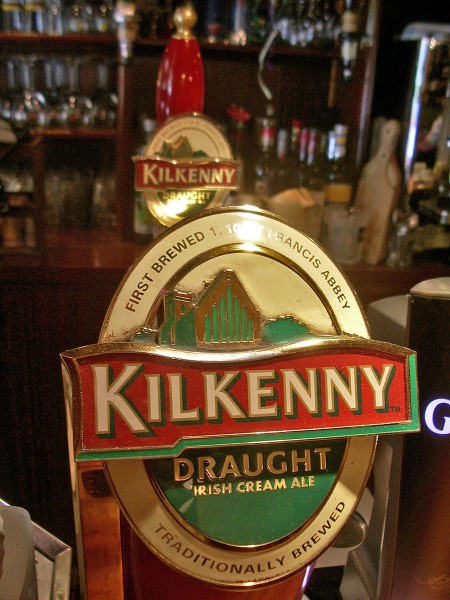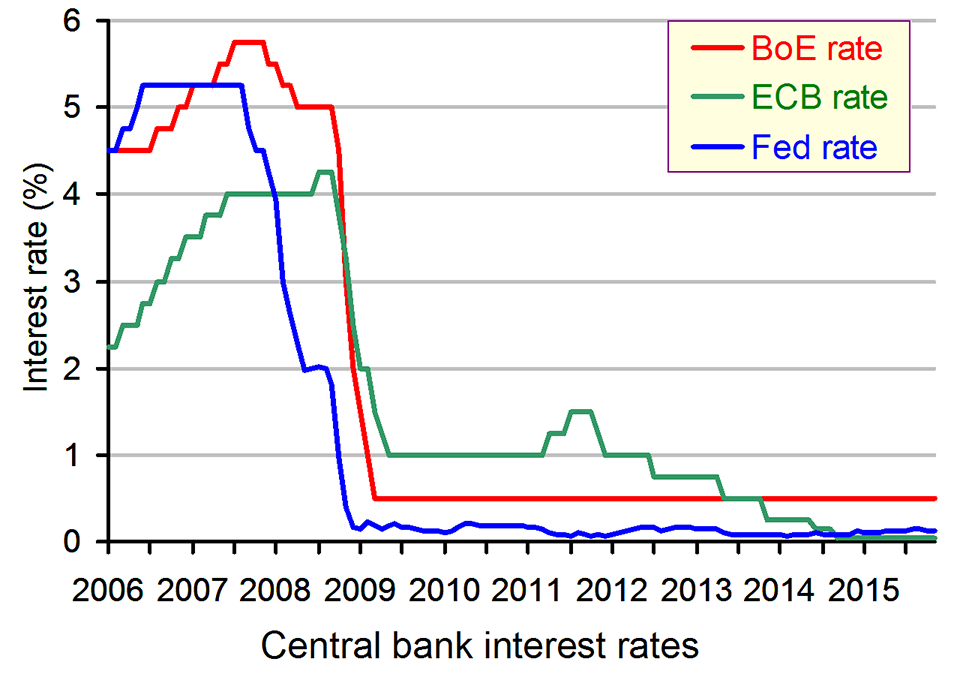 This rather strange question has been central to a storm that has been brewing between various celebrity chefs, including Jamie Oliver and Hugh Fearnley-Whittingstall, and the supermarkets. Supermarkets say that consumers don’t want irregular shaped vegetables, such as carrots, parsnips and potatoes. ‘Nonsense’, say their critics.
This rather strange question has been central to a storm that has been brewing between various celebrity chefs, including Jamie Oliver and Hugh Fearnley-Whittingstall, and the supermarkets. Supermarkets say that consumers don’t want irregular shaped vegetables, such as carrots, parsnips and potatoes. ‘Nonsense’, say their critics.
At the centre of the storm are the farmers, who find a large proportion of their vegetables are rejected by the supermarkets. And these are vegetables which are not damaged or bad – simply not of the required shape. Although these rejected vegetables have been described as ‘wonky’, in fact many are not wonky at all, but simply a little too large or too small, or too short or too long. Most of these vegetables are simply wasted – ploughed back into the ground, or at best used for animal feed.
And it’s not just shape; it’s colour too. Many producers of apples find a large proportion being rejected because they are too red or not red enough.
 But do consumers really want standardised fruit vegetables? Are the supermarkets correct? Are they responding to demand? Or are they attempting to manipulate demand?
But do consumers really want standardised fruit vegetables? Are the supermarkets correct? Are they responding to demand? Or are they attempting to manipulate demand?
Supermarkets claim that they are just responding to what consumers want. Their critics say that they are setting ludicrously rigid cosmetic standards which are of little concern to consumers. As Hugh Fearnley-Whittingstall states:
‘It’s only when you see the process of selection on the farm, how it has been honed and intensified, it just looks mad. There are many factory line systems where you have people looking for faults on the production line; in this system you’re looking for the good ones.
What we’re asking supermarkets to do is to relax their cosmetic standards for the vegetables that all get bagged up and sold together. It’s about slipping a few more of the not-so-perfect ones into the bag.’
In return, consumers must be prepared to let the supermarkets know that they are against these cosmetic standards and are perfectly happy to buy slightly more irregular fruit and vegetables. Indeed, this is beginning to happen through social media.  The pressure group 38 degrees has already taken up the cause.
The pressure group 38 degrees has already taken up the cause.
But perhaps consumers ‘voting with their feet’ is what will change supermarkets’ behaviour. With the rise of small independent greengrocers, many from Eastern Europe, there is now intense competition in the fruit and vegetables market in many towns and cities. Perhaps supermarkets will be forced to sell slightly less cosmetically ‘perfect’ produce at a lower price to meet this competition.
Videos
 Hugh’s War on Waste Episode 1 BBC on YouTube, Hugh Fearnley-Whittingstall (2/11/15)
Hugh’s War on Waste Episode 1 BBC on YouTube, Hugh Fearnley-Whittingstall (2/11/15)
 Hugh’s War on Waste Episode 2 BBC on YouTube, Hugh Fearnley-Whittingstall (9/11/15)
Hugh’s War on Waste Episode 2 BBC on YouTube, Hugh Fearnley-Whittingstall (9/11/15)
Articles
Hugh Fearnley-Whittingstall rejects Morrisons’ ‘pathetic’ wonky veg trial The Guardian, Adam Vaughan (9/11/15)
Jamie Oliver leads drive to buy misshapen fruit and vegetables The Guardian, Rebecca Smithers (1/1/15)
Hugh Fearnley-Whittingstall’s war over wonky parsnips The Telegraph, Patrick Foster (30/10/15)
Asda extends ‘wonky’ fruit and veg range Resource, Edward Perchard (4/11/15)
Wearne’s last farmer shares memories and laments loss of farming community in Langport area Western Gazette, WGD Mumby (8/11/15)
Viewpoint: The rejected vegetables that aren’t even wonky BBC News Magazine (28/10/15)
Viewpoint: The supermarkets’ guilty secret about unsold food BBC News Magazine (6/11/15)
Questions
- What market failures are there is the market for fresh fruit and vegetables?
- Supermarkets are oligopsonists in the wholesale market for fruit and vegetables. What is the implication of this for (a) farmers; (b) consumers?
- Is there anything that (a) consumers and (b) the government can do to stop the waste of fruit and vegetables grown for supermarkets?
- How might supermarkets estimate the demand for fresh fruit and vegetables and its price elasticity?
- What can supermarkets do with unsold food? What incentives are there for supermarkets not to throw it away but to make good use of it?
- Could appropriate marketing persuade people to be less concerned about the appearance of fruit and vegetables? What form might this marketing take?
 The town of Kilkenny in Ireland has just hosted the sixth annual Kilkenomics festival (Nov 5–8) where economics and comedy meet. The festival brought together comedians and economists to take a look at some of the most pressing economic and social issues, such as the refugee crisis, economic recovery, banking and finance, the growth in inequality, the future of the EU, economic power, the environment and personal behaviour.
The town of Kilkenny in Ireland has just hosted the sixth annual Kilkenomics festival (Nov 5–8) where economics and comedy meet. The festival brought together comedians and economists to take a look at some of the most pressing economic and social issues, such as the refugee crisis, economic recovery, banking and finance, the growth in inequality, the future of the EU, economic power, the environment and personal behaviour.
With stand-up comedians taking a sideways look at economic issues and top economists having their ideas lampooned, or lampooning them themselves, the festival provided a fun, but useful, reality check for the discipline of economics.
 The festival attracted some major names in the field of comedy, economics, journalism and politics. Perhaps the biggest draw was the former finance minister of Greece, Yanis Varoufakis (see also), who opened the festival with a withering attack on the economic model being pursued by Greece’s creditors (the European Commission, the IMF and the ECB).
The festival attracted some major names in the field of comedy, economics, journalism and politics. Perhaps the biggest draw was the former finance minister of Greece, Yanis Varoufakis (see also), who opened the festival with a withering attack on the economic model being pursued by Greece’s creditors (the European Commission, the IMF and the ECB).
Much of the comedy was really aimed, not so much at economics and economists, but more at how politicians pursue economic policies and interpret economic models in ways that suit their own political agenda. But still there was no escape for economists. Much of the humour was directed at unrealistic assumptions and unrealistic visions of how economies function.
Thanks to JokEc for the following:
|
|
| • |
Economics is the only field in which two people can get a Nobel Prize for saying exactly the opposite thing. |
| • |
If you rearrange the letters in “ECONOMICS”, you get “COMIC NOSE”. |
| • |
Economics has got so rigorous we’ve all got rigor mortis. |
| • |
How many economists does it take to change a light bulb? |
I’ll leave you to work out the best answer to that last one – there could be many depending on the school of thought.
Videos and podcasts
 Kilkenomics Promo – 2015 Kilkenomics on YouTube (23/10/15)
Kilkenomics Promo – 2015 Kilkenomics on YouTube (23/10/15)
 Kilkenomics: Highlights 1 Kilkenomics on YouTube (27/10/15)
Kilkenomics: Highlights 1 Kilkenomics on YouTube (27/10/15)
 Kilkenomics: Highlights 2 Kilkenomics on YouTube (30/10/15)
Kilkenomics: Highlights 2 Kilkenomics on YouTube (30/10/15)
 Kilkenomics 2014 BBC ‘In the Balance’ (9/11/14)
Kilkenomics 2014 BBC ‘In the Balance’ (9/11/14)
Articles
Kilkenomics launches biggest programme to date Meath Chronicle (1/10/15)
The subversive wonders of Kilkenomics – where economics meets stand-up The Spectator, Liam Halligan (15/11/14)
Guilty as charged: Irish standup festival puts economics in the dock The Guardian, Larry Elliott (8/11/15)
Ireland no paradigm of successful austerity – Varoufakis The Irish Times, Eoin Burke Kennedy (5/11/15)
Economy of sex … how much are your orgasms costing you? Irish Independent, Niamh Horan (8/11/15)
Questions
- What is it about economics that gives so much material to comedians?
- ‘The worse it gets the funnier it seems because comedy exists with tragedy.’ To what extent is this true of economics as a discipline or simply of the state of the world economists are studying at any one time?
- Should assumptions in economics always be realistic? Explain why or why not.
- For what types of reason might economists disagree?
- Make up an economics joke and test it on your fellow students. Perhaps there ought to be a vote for the funniest and a prize for the winner. What was it about the winning joke that made it the funniest?
 Interest rates in the UK have been at a record low since 2009, recorded at just 0.5%. In July, the forward guidance from Mark Carney seemed to indicate that a rate rise would be likely towards the start of 2016. However, with the recovery of the British economy slowing, together with continuing problems in Europe and slowdowns in China, a rate rise has become less likely. Forward guidance hasn’t been particularly ‘guiding’, as a rate rise now seems most likely well into 2016 or even in 2017 and this is still very speculative.
Interest rates in the UK have been at a record low since 2009, recorded at just 0.5%. In July, the forward guidance from Mark Carney seemed to indicate that a rate rise would be likely towards the start of 2016. However, with the recovery of the British economy slowing, together with continuing problems in Europe and slowdowns in China, a rate rise has become less likely. Forward guidance hasn’t been particularly ‘guiding’, as a rate rise now seems most likely well into 2016 or even in 2017 and this is still very speculative.
Interest rates are a key tool of monetary policy and one of the government’s demand management policies. Low interest rates have remained in the UK as a means of stimulating economic growth, via influencing aggregate demand. Interest rates affect many of the components of aggregate demand, such as consumption – through affecting the incentive to save and spend and by affecting mortgage rates and disposable income. They affect investment by influencing the cost of borrowing and net exports through changing the exchange rate and hence the competitiveness of exports.
Low interest rates therefore help to boost all components of aggregate demand and this then should stimulate economic growth. While they have helped to do their job, circumstances across the global economy have acted in the opposite direction and so their effectiveness has been reduced.
 Although the latest news on interest rates may suggest some worrying times for the UK, the information contained in the Bank of England’s Inflation Report isn’t all bad. Despite its predictions that the growth rate of the world economy will slow and inflation will remain weak, the predictions from August remain largely the same. The suggestion that interest rates will remain at 0.5% and that any increases are likely to be at a slow pace will flatten the yield curve, and, with predictions that inflation will remain weak, there will be few concerns that continuing low rates will cause inflationary pressures in the coming months. Mark Carney said:
Although the latest news on interest rates may suggest some worrying times for the UK, the information contained in the Bank of England’s Inflation Report isn’t all bad. Despite its predictions that the growth rate of the world economy will slow and inflation will remain weak, the predictions from August remain largely the same. The suggestion that interest rates will remain at 0.5% and that any increases are likely to be at a slow pace will flatten the yield curve, and, with predictions that inflation will remain weak, there will be few concerns that continuing low rates will cause inflationary pressures in the coming months. Mark Carney said:
“The lower path for Bank Rate implied by market yields would provide more than adequate support to domestic demand to bring inflation to target even in the face of global weakness.”
However, there are many critics of keeping interest rates down, both in the UK and the USA, in particular because of the implications for asset prices, in particular the housing market and for the growth in borrowing and hence credit debt. The Institute of Directors Chief Economist, James Sproute said:
“There is genuine apprehension over asset prices, the misallocation of capital and consumer debt…Borrowing is comfortably below the unsustainable pre-crisis levels, but with debt once against rising there is a need for vigilance…The question is, will the Bank look back on this unprecedented period of extraordinary monetary policy and wish they had acted sooner? The path of inaction may seem easier today, but maintaining rates this low, for this long, could prove a much riskier decision tomorrow.”
hanges in the strength of the global economy will certainly have a role to play in forming the opinions of the Monetary Policy Committee and it will also be a key event when the Federal Reserve pushes up its interest rates. This is certainly an area to keep watching, as it’s not a question of if rates will rise, but when.
Articles
Bank of England dampens prospects of early UK rate rise BBC News (5/11/15)
Bank of England Governor gets his forward guidance on interest rates wrong Independent, Ben Chu (6/11/15)
Interest rates set to remain at rock-bottom right through 2016 as Bank of England cuts UK growth and inflation forecasts This is Money, Adrian Lowery (5/11/15)
 Pound slides as Bank of England suggests interest rates will stay low for longer – as it happened 5 November 2015 The Telegraph, Peter Spence (5/11/15)
Pound slides as Bank of England suggests interest rates will stay low for longer – as it happened 5 November 2015 The Telegraph, Peter Spence (5/11/15)
UK’s record low interest rates should be raised next Februrary says NIESE The Telegraph, Szu Ping Chan (4/11/15)
Fresh signs of slowdown will force interest rates rise to be put on hold The Guardian, Katie Allen (2/11/15)
The perils of keeping interest rates so low The Telegraph, Andrew Sentence (6/11/15)
Time to ask why we are still in the era of ultra-low rates Financial Times, Chris Giles (4/11/15)
No interest rate rise until 2017: Joy for homeowners as Bank of England delays hike in mortgage costs again Mail Online, Matt Chorley (5/11/15)
 Pound tumbles after Carney warns its strength threatens recovery Bloomberg, Lucy Meakin (5/11/15)
Pound tumbles after Carney warns its strength threatens recovery Bloomberg, Lucy Meakin (5/11/15)
Is Carney hurt by wrong rate steer? BBC News, Robert Peston (5/11/15)
Data and Reports
Inflation Report Bank of England (August 2015)
Inflation Report Bank of England (November 2015)
Historical Fan Chart Data Bank of England (2015)
Questions
- Use and AD/AS diagram, explain how low interest rates affect the key components of aggregate demand and in turn how this will affect economic growth.
- What is meant by the ‘yield curve’? How has it been affected by the latest release from the Monetary Policy Committee?
- Why has the value of the pound been affected following the decision to keep interest rates at 0.5%?
- How has the sterling exchange rate changed and how might this affect UK exports?
- What are the main concerns expressed by those who think that there is a danger from keeping interest rates low for too long?
- Why is the outlook of the global economy so important for the direction of interest rate changes?
 There are countless people who work 12-hour days – some get rewarded with huge salaries, while others are paid peanuts. A key question is: are these people happy? With 24 hours in a day for both rich and poor, the more hours we work, the fewer hours we have for leisure time. So, how do we choose the optimal work-life balance?
There are countless people who work 12-hour days – some get rewarded with huge salaries, while others are paid peanuts. A key question is: are these people happy? With 24 hours in a day for both rich and poor, the more hours we work, the fewer hours we have for leisure time. So, how do we choose the optimal work-life balance?
In economics, we often talk about the concept of diminishing marginal utility and this concept can be applied to working life. For many people, each additional hour worked is tougher or adds less to your utility – we get tired, bored and the job may seem more unpleasant the more hours you work. The typical day of work is around 7-8 hours, but across Sweden, some offices are now closing at 3.30, with a 6-hour working day, but with salaries remaining the same.  It’s not a new idea in Sweden and trials of this shorter working day concept have proved successful, with higher reported profits, better service to customers (or patients) and happier, more productive staff.
It’s not a new idea in Sweden and trials of this shorter working day concept have proved successful, with higher reported profits, better service to customers (or patients) and happier, more productive staff.
This shorter working day is not a common occurrence across Sweden or other countries, but it’s a practice that is certainly garnering media attention. Companies will certainly be keen if this means an increase in productivity, but one key concern will be the potential loss of business from companies who do keep working after 3.30 and expect phones to be answered.
It would certainly be an attractive prospect for employees and perhaps is a good way of ‘poaching’ the best staff and hence of boosting worker productivity. With more free time, perhaps an employee’s happiness would also increase, which could have significant effects on a range of variables. The following article considers this shorter working day.
The truth about Sweden’s short working hours BBC News, Maddy Savage (2/11/15)
Questions
- Explain the concept of diminishing marginal utility with respect to hours worked. Can this be used to explain why overtime often receives higher rates of pay?
- Using indifference analysis, explain how a change in the number of hours worked might affect an individual’s happiness.
- Why might a shorter working day help to increase a firm’s profits?
- If a shorter working day did increase happiness, what other factors might be affected? Does this explain why other countries are so interested in the success of this initiative?
 According to a an article in The Guardian, The best news in the world, by the president of the World Bank, Jim Yong Kim, there has been a dramatic fall in global poverty over the past two decades. The number of people in extreme poverty is projected to fall this year to below 10% of global population for the first time. This has been made possible, he claims, by unprecedented economic growth, especially in China.
According to a an article in The Guardian, The best news in the world, by the president of the World Bank, Jim Yong Kim, there has been a dramatic fall in global poverty over the past two decades. The number of people in extreme poverty is projected to fall this year to below 10% of global population for the first time. This has been made possible, he claims, by unprecedented economic growth, especially in China.
But this raises three questions.
The first is whether, in the face of falling growth rates, progress in poverty reduction can be maintained.
The second is whether the World Bank is measuring extreme poverty in the right way. It is now defined as living on less than US$1.90 a day in 2011 prices – until a few weeks ago is was $1.25 in 2005 prices. As a result of this rebasing, global poverty falls from 14.5% of the world’s population (or 1011 million people) under the old method to 14.2% (or 987 million) under the new.
The third question is whether countries can improve their data collection so that a truer estimate of poverty can be made.
As far as the first question is concerned, Kim states that to stimulate growth, ‘every dollar of public spending should be scrutinised for impact. Every effort must be made to improve productivity.’ What is more, three things must happen:
|
|
| • |
Economic growth must lift all people. It must be inclusive. |
| • |
Investment in human beings is crucial – especially investing in their health and education. Malnourished and poorly educated children will never reach their full potential and countries, in turn, will fall short of their economic and social aspirations. |
| • |
We must ensure that we can provide safety nets that prevent people from falling back into poverty because of poor health, economic shocks, or natural disasters. |
As far as the second question is concerned, there are many who argue that $1.90 per day is far too low a measure of the extreme poverty threshold. It is a purchasing-power parity measure and is equivalent to what $1.90 would buy in the USA in 2011.  But, according to the Jason Hickel article linked below, ‘the US Department of Agriculture calculates that in 2011 the very minimum necessary to buy sufficient food was $5.04 per day. And that’s not taking account of other requirements for survival, such as shelter and clothing.’ Peter Edward of Newcastle University, claims Hickell, ‘calculates that in order to achieve normal human life expectancy of just over 70 years, people need roughly 2.7 to 3.9 times the existing poverty line.’
But, according to the Jason Hickel article linked below, ‘the US Department of Agriculture calculates that in 2011 the very minimum necessary to buy sufficient food was $5.04 per day. And that’s not taking account of other requirements for survival, such as shelter and clothing.’ Peter Edward of Newcastle University, claims Hickell, ‘calculates that in order to achieve normal human life expectancy of just over 70 years, people need roughly 2.7 to 3.9 times the existing poverty line.’
But even if living on below $1.90 a day is defined as extreme poverty, it is important not to see the problem of poverty as having been solved for people who manage to achieve an income slightly above that level.
The third question is how to improve data. There is a paucity and unreliability of data in many developing countries. According to Kim:
Our report adds that data is sparse and inconsistent across the region and globally. Some 29 countries around the world had no poverty data from 2002 to 2011, so they could not track their progress. Another 28 had just one survey that collected poverty data during that time.
This is a situation that must change to improve the world’s ability to tackle poverty. In fact, we can’t accomplish our goal if we do not have enough information to know whether people are actually lifting themselves out of poverty. For that we need to address huge data gaps. We need robust data.
Articles
The best news in the world: we have made real progress towards ending extreme poverty The Guardian, Jim Yong Kim (3/11/15)
Could you live on $1.90 a day? That’s the international poverty line The Guardian, Jason Hickel (1/11/15)
Making international trade work for the world’s poorest The Guardian, Jim Yong Kim and Roberto Azevêdo (30/6/15)
Global Poverty Will Hit New Low This Year, World Bank Says Huffington Post, Lydia O’Connor (23/10/15)
The international poverty line has just been raised to $1.90 a day, but global poverty is basically unchanged. How is that even possible? World Bank blogs, Francisco Ferreira, Dean Mitchell Jolliffe and Espen Beer Prydz (4/10/2015)
Why Didn’t the World Bank Make Reducing Inequality One of Its Goals? World Bank blogs, Jaime Saavedra-Chanduvi (23/9/13)
$1.90 Per Day: What Does it Say? Institute for New Economic Thinking, Rahul Lahoti and Sanjay Reddy (6/10/15)
Reports and papers
The Role of Trade in Ending Poverty WTO and World Bank (2015)
Poverty in a Rising Africa World Bank (1/10/15)
Ending extreme poverty and sharing prosperity: progress and policies World Bank, Marcio Cruz, James Foster, Bryce Quillin and Philip Schellekens (October 2015)
Questions
- Explain how the World Bank calculates the extreme poverty line.
- Why, if the line has risen from $1.25 per day to $1.90 per day, has the number of people recorded as being in extreme poverty fallen as a result?
- Why has the number of people in extreme poverty been rising over the years and yet the percentage of people in extreme poverty been falling?
- What policies can be adopted to tackle poverty? Discuss their practicality?
- Are reduced poverty and increased economic growth consistent policy goals? (See the blog post Inequality and economic growth.)
- What are the inadequacies of using income per day (albeit in ppp terms) as a measure of the degree of poverty? What other indicators of poverty could be used and how suitable would they be?
- How could international trade be made to work for the world’s poorest?
 This rather strange question has been central to a storm that has been brewing between various celebrity chefs, including Jamie Oliver and Hugh Fearnley-Whittingstall, and the supermarkets. Supermarkets say that consumers don’t want irregular shaped vegetables, such as carrots, parsnips and potatoes. ‘Nonsense’, say their critics.
This rather strange question has been central to a storm that has been brewing between various celebrity chefs, including Jamie Oliver and Hugh Fearnley-Whittingstall, and the supermarkets. Supermarkets say that consumers don’t want irregular shaped vegetables, such as carrots, parsnips and potatoes. ‘Nonsense’, say their critics. But do consumers really want standardised fruit vegetables? Are the supermarkets correct? Are they responding to demand? Or are they attempting to manipulate demand?
But do consumers really want standardised fruit vegetables? Are the supermarkets correct? Are they responding to demand? Or are they attempting to manipulate demand? The pressure group 38 degrees has already taken up the cause.
The pressure group 38 degrees has already taken up the cause. Hugh’s War on Waste Episode 1 BBC on YouTube, Hugh Fearnley-Whittingstall (2/11/15)
Hugh’s War on Waste Episode 1 BBC on YouTube, Hugh Fearnley-Whittingstall (2/11/15) Hugh’s War on Waste Episode 2 BBC on YouTube, Hugh Fearnley-Whittingstall (9/11/15)
Hugh’s War on Waste Episode 2 BBC on YouTube, Hugh Fearnley-Whittingstall (9/11/15)










